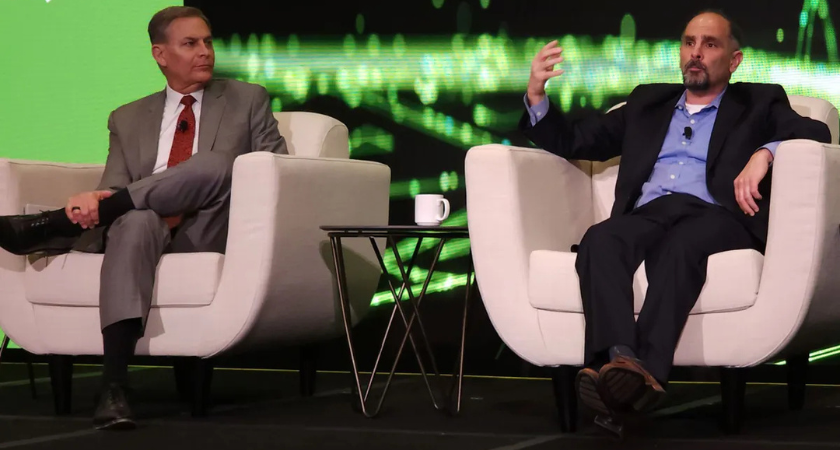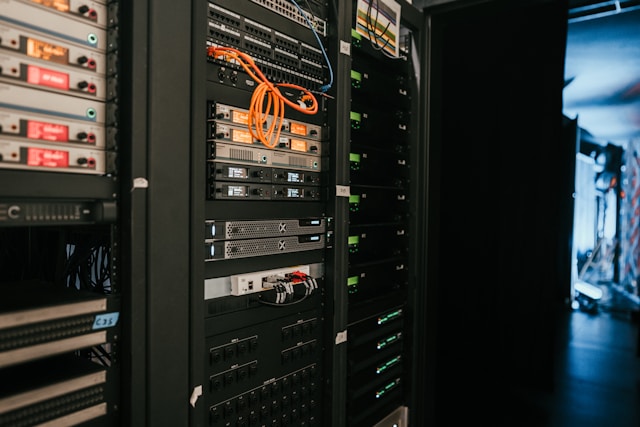
Artificial intelligence and nonstop digital connectivity continue to reshape the U.S. economy — and data centers are at the center of that transformation. Panelists at Nvidia GTC in Washington, D.C. this week said the boom is generating new jobs, reinvestment in domestic manufacturing and long-term construction demand nationwide.
Over the last decade, cloud computing, virtual workloads and AI-driven applications have skyrocketed. A 2020 study in Science found that global data center workloads grew sixfold between 2010 and 2018 as companies traded small server rooms for powerful hyperscale campuses.

Today, Americans rely on more connected devices than ever. A 2023 Deloitte report shows the average U.S. household has 13 device types and 21 connected devices — everything from smart thermostats and watches to appliances. Those devices rely on massive data storage footprints.
That trend is pushing facilities to expand even further. Josh Levi, president of the Data Center Coalition, said AI and machine learning are now driving entire facilities dedicated solely to advanced compute.
He expects the momentum to continue, along with broader economic benefits.
Industries that once relied on traditional machinery now incorporate digital twins, robotics and predictive analytics. Manufacturers are integrating AI into product design, operations and supply chains, according to a new report issued by the National Association of Manufacturers (NAM).
Companies including Belden, Lucid Motors, TSMC, Caterpillar and Foxconn are deploying Nvidia’s Omniverse technology to accelerate factory performance. Foxconn is even using the platform to design and upgrade its new 242,287-square-foot Houston site to produce Nvidia’s AI infrastructure equipment.
At least 51% of U.S. manufacturers already use AI, NAM’s latest survey shows — and 80% say it will be essential to compete by 2030.
“I think a lot of folks don’t think of AI as manufacturing or manufacturing processes,” said Jay Timmons, NAM’s CEO and president. “The truth of the matter is, every form of technology through decades has begun with manufacturers, and we drive it forward.”
Direct employment in the U.S. data center market rose more than 50% between 2017 and 2023 — from 2.9 million jobs to 4.7 million, according to a Data Center Coalition–PwC report.
That reach extends into the broader built environment, with electricians, engineers, modular builders and infrastructure contractors in high demand.
Electrical component manufacturing is particularly surging. Since 2018, the industry has invested $185 billion in U.S. facility expansions to support data centers, according to the National Electrical Manufacturers Association (NEMA). The market is now valued at $375 billion.
“These are national security assets,” Debra Phillips, NEMA’s CEO and president, said. “You think about transformers, you think about critical minerals, these materials will go into the electrical products that are part of the data center space.”
The retrofit market also remains strong. Around 25% of Local 26 IBEW’s data center work involves modernizing and expanding existing electrical systems.

“The evolution of what is placed in these data centers changes so quickly,” said Don Slaiman of IBEW Local 26. “So we got manufacturing, we got maintenance, we got construction, and we got retrofitting. So it’s a gift that keeps on giving for workers.”
With 409,000 open manufacturing jobs in the U.S. and demand expected to hit 3.8 million positions by 2033, developing a skilled workforce is a top priority.
“What we’re going to see is that the jobs in manufacturing are going to require a different set of skills, and we’re going to need folks that understand how to utilize this technology to make us safer, to make us more efficient, to make our operations faster,” Timmons said.
But the panel warned that U.S. tax policy, permitting delays and power grid challenges could slow progress. Data centers and AI workloads account for around 60% of electricity usage on average, according to the International Energy Agency — increasing pressure on utilities and regulators.
Panelists urged policymakers to streamline approvals for transmission upgrades, energy infrastructure and next-generation grid innovations.
Levi stressed that resilient supply chains are critical to keep scaling these facilities.
“We have the manufacturers who are collaboratively working with the end user data centers to continue to innovate and develop new manufacturing capabilities in top data center markets,” he said.
AI demand isn’t slowing — and neither is the infrastructure needed to power it. From electrical manufacturing plants to large-scale construction projects, industry leaders see the data center boom as a long-term driver of U.S. economic expansion.
Originally reported by Sara Samora in Construction Dive.